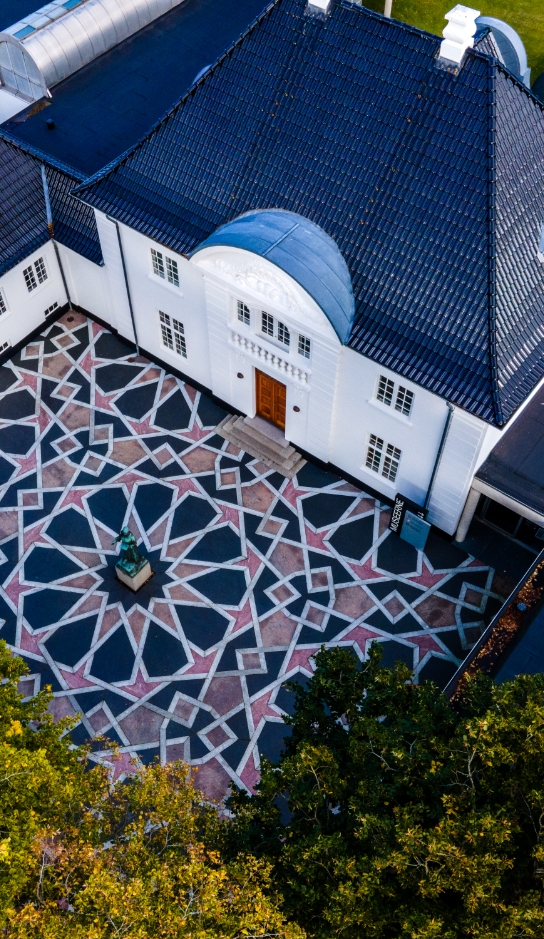Tibetan traditional art
Holstebro Kunstmuseum's collection of Tibetan traditional art is a gift from ceramicist Christian Poulsen. In the 1970s he made several study tours to Asia where he made acquaintance with Tibetan pictorial art, and he was thus among the first to introduce this art form in Denmark.
There are two traditional Tibetan art forms: the thangka and the block print. They are both so-called meditation images as well as being examples of the alien, but rich history of pictorial art of Tibet. In Tibet art, religion and life have always been inextricably woven together. So it is important to view thangkas and block prints as an expression of a religious act, a sort of meditation.
Since Buddhism was brought to Tibet in the 7th century, replacing the indigenous animistic faith, it has been fundamental to all aspects of Tibetan life. By means of meditation practising Buddhists strive to achieve the Buddha consciousness, a state of mind where you liberate the ego and see through the delusions of the outer, material world.
Thangkas and block prints - meditationsværker
The compositions of thangkas and block prints follow strict rules. Each figure is associated with a particular colour and depicted with special attributes. Thangkas are hung in temples and monasteries or in private homes, serving as a kind of altar; moreover, on rare occasions they are carried as banners by the monks during religious processions.
Thangkas are painted on thin cotton fabric which is first coated with a mixture of powdered chalk and gum. The dye that is subsequently applied is a natural dye made from plants and crushed stone. Block printing is an early, but effective printing technique: the motif is carved into a piece of wood, and the raised area is then inked and pressed onto paper.
The artist as a medium - not an individual
The individual thangkas and block prints are pictorial representations of the meditative journey undertaken during their creation by the monk who made them. The figures and symbols that are painted on the thangkas each represent certain virtues of Buddhist religion. The Buddhist artist is a medium through whose mastery of the art of painting and appreciation of the pictorial culture of Buddhism the divine manifests itself in a form capable of revealing the metaphysical world.
The degree of anonymity of the individual artists makes it difficult to talk about actual schools and dramatic new departures in Tibetan art. However, in the southern part of Tibet artists clearly take inspiration from Nepalese tradition, whereas in the northern part of the country they have turned their eyes towards China.
The artistic expression of the artworks is greatly influenced by the fact that the Buddhist monks regard them as a religious act. Buddhist art is almost devoid of any trace of individuality, and the artists are therefore most often anonymous. They are not individual artists in the sense used in the modern post-Renaissance world, but monks who let go of their individuality in favour of a metaphysical world.

